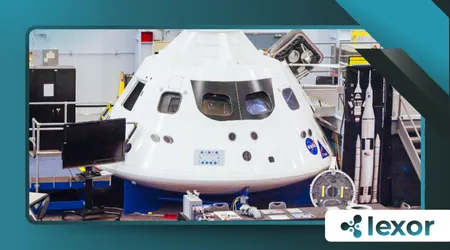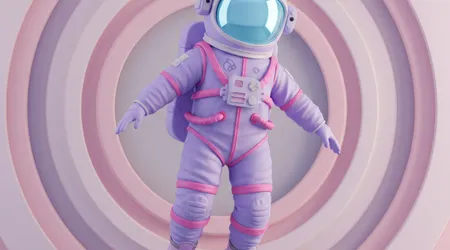How VR Is Used in Space Exploration and Training

The incredible journey into the cosmos is being transformed by technology, particularly when we explore VR Is Used in Space Exploration and Training.
This immersive medium has rapidly evolved beyond gaming, establishing itself as an indispensable tool for space agencies worldwide.
The Indispensable Role of VR in Mission Preparation
Virtual Reality is not just a simulator; it’s a portal. It transports astronauts into environments otherwise inaccessible until launch day. This essential preparation is key to mission success and crew safety.
Enhancing Spacewalk Dexterity
Performing a spacewalk, or Extravehicular Activity (EVA), is one of the riskiest tasks. VR recreates the complex physics and visual cues of microgravity with remarkable fidelity.
Astronauts can practice critical maneuvers repeatedly without the high cost and physical strain of a neutral buoyancy laboratory (NBL).
This repetition is vital for building the muscle memory needed for intricate repairs. They learn to handle tools and navigate the exterior of the International Space Station (ISS) in a simulated vacuum.
VR training complements the NBL, focusing on mental mapping and procedural fluency.
Read more: Top VR Applications Transforming Industries
Simulating Extreme Planetary Environments
Imagine rehearsing a moon landing or a traverse on Mars years before the physical mission. VR makes this possible, preparing crews for unexpected terrain and lighting conditions.
These detailed simulations are crucial for upcoming Artemis missions.
For instance, the VR Is Used in Space Exploration and Training concept allows engineers to pre-visualize equipment placement on the lunar surface.
It offers astronauts a low-risk environment to practice emergency protocols. What greater preparation could one ask for than a near-perfect digital twin of the mission?
Overcoming the Challenges of Deep Space Travel
Long-duration space missions present unique psychological and operational hurdles. VR is proving to be a powerful countermeasure against these isolation effects.
++ How VR Is Supporting People with Disabilities
Psychological Resilience and Crew Cohesion
Months or years in the confines of a spacecraft can take a toll on mental health. VR provides controlled, familiar escapes, like walking on a digital Earth beach or in a forest.
These “virtual vacations” are a critical component of psychological support programs.
Furthermore, multi-user VR platforms enable collaborative training, strengthening team dynamics. Crews practice critical procedures together, even when physically separated by distance on a vessel.
++ Virtual Reality in Job Interviews and Recruitment
Developing Advanced Telerobotics Skills
Future missions will increasingly rely on sophisticated robotics for maintenance and exploration.
VR Is Used in Space Exploration and Training to hone the skills of operating these complex machines remotely. A significant benefit of this approach is minimizing risk to human life.
Original Example 1: Consider the Gateway lunar outpost.
Astronauts can practice deploying and manipulating robotic arms to assemble future modules in a high-fidelity VR simulation, long before the hardware even leaves Earth.
This reduces potential, costly mistakes in actual space.
++ Discover VR Training With ArborXR
Data-Driven Decisions and Training Effectiveness
The efficacy of VR training is not merely anecdotal; it is quantified by research and mission results. Space agencies rely on empirical data to validate these methods.
In a 2021 study published by the Aviation, Space, and Environmental Medicine journal, researchers found that astronauts who utilized VR simulations for specific procedures demonstrated a 25% faster task completion rate during in-flight operations compared to those who relied solely on traditional methods.
This statistic underscores the value proposition of VR.

To illustrate the technical capabilities, consider the comparative fidelity of different simulation methods:
| Simulation Method | Fidelity of Microgravity Sensation | Procedural Repetition Cost | Training Environment Control |
| Neutral Buoyancy Lab (NBL) | High (Physical) | Very High | Medium |
| Virtual Reality (VR) | Medium-High (Visual/Haptic) | Very Low | High |
| Partial Gravity Aircraft | Low (Short Bursts) | Very High | Low |
The balance of high fidelity and low cost makes VR an increasingly attractive solution.
The Next Frontier: VR Beyond Training
VR Is Used in Space Exploration and Training for a wider array of applications than ever before. It’s moving from a purely training tool to an operational asset.
Real-time Mission Support and Visualization
Ground control teams can use VR to visualize the environment around a spacecraft or rover. This capability allows them to provide more accurate and immediate assistance to the crew.
It’s like having a digital ghost of the astronaut working right beside the support team.
During an unexpected sensor failure on a Mars rover, a mission control specialist can enter a VR model of the rover.
They can then virtually ‘walk’ around the machine, precisely identifying the failed component and formulating a repair plan. This real-time visualization capability significantly accelerates problem-solving.
An Analogous Perspective on Preparation
Think of VR as a cosmic flight simulator. A pilot wouldn’t fly a Boeing 747 without thousands of hours in a simulator; why should an astronaut prepare for a billion-dollar space mission with any less rigor?
The stakes are simply too high for anything less than perfect preparation. This is why the integration of VR Is Used in Space Exploration and Training has become essential.
The ultimate aim is to create an experience so realistic that when the astronaut performs the task in space, it feels like the hundredth time they’ve done it.
The technology is rapidly advancing, with haptics and improved latency making the simulations nearly indistinguishable from reality.
Looking to the Future of Immersive Space Technology
The synergistic relationship between space exploration and technology is only deepening. Every agency, from NASA to ESA, is investing heavily in this domain.
The capabilities extend to designing better spacecraft. Engineers can literally step inside their future designs for ergonomic assessments.
The fact that VR Is Used in Space Exploration and Training so extensively today suggests its role will only grow.
We are witnessing a pivotal shift, where virtual practice is just as valuable as physical training. Soon, almost every critical operation will be first mastered in the metaverse of space.
Considering the rapid advances in hardware and fidelity, will there ever be a point where virtual training completely surpasses the need for physical simulation?
This is a question worth pondering as we look toward the human colonization of other worlds.
The future success of interstellar travel hinges on innovative preparation, and VR Is Used in Space Exploration and Training is leading the charge.
Frequently Asked Questions
Is VR a replacement for traditional physical training like the NBL?
No, VR is a powerful complement. The Neutral Buoyancy Lab (NBL) is vital for physical strength and vestibulary adaptation.
VR focuses on cognitive load, procedural training, visual acuity, and complex problem-solving in a low-cost, high-repetition environment.
What is the main psychological benefit of using VR for astronauts?
A key benefit is providing controlled psychological relief.
VR allows astronauts to temporarily escape the confines of their spacecraft through immersive “virtual nature walks” or familiar terrestrial environments, helping to combat feelings of isolation and improve mental well-being during long missions.
Can non-astronauts use VR for space-related training?
Absolutely. VR is extensively used to train mission control personnel, engineers, and scientists.
It allows them to understand operational environments, test procedures, and practice mission support roles with a level of immersion traditional screen-based simulations cannot match.
